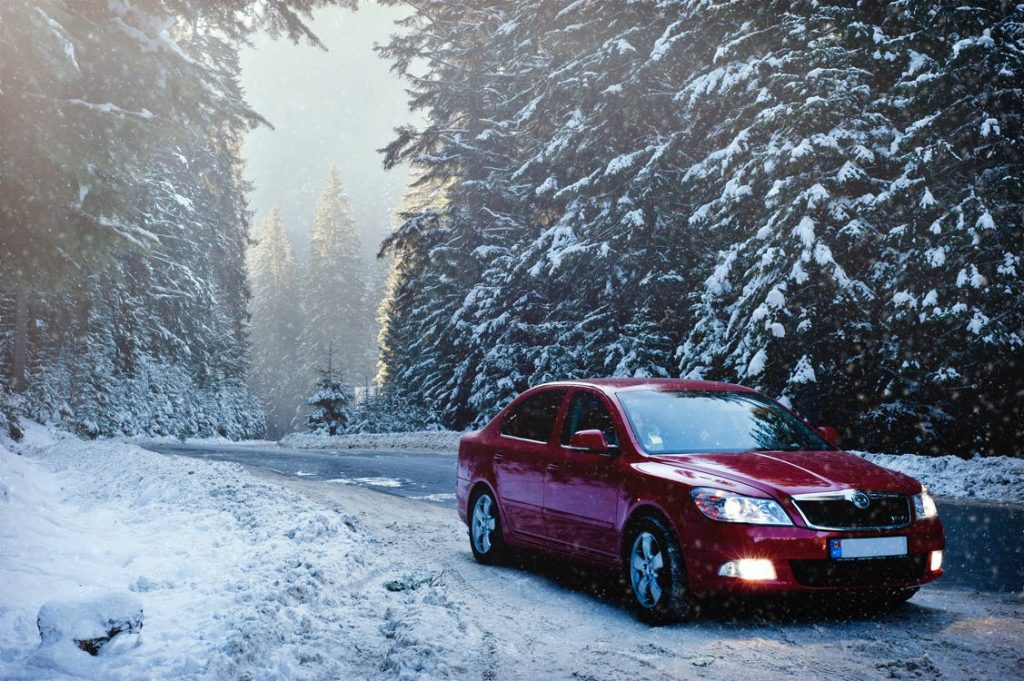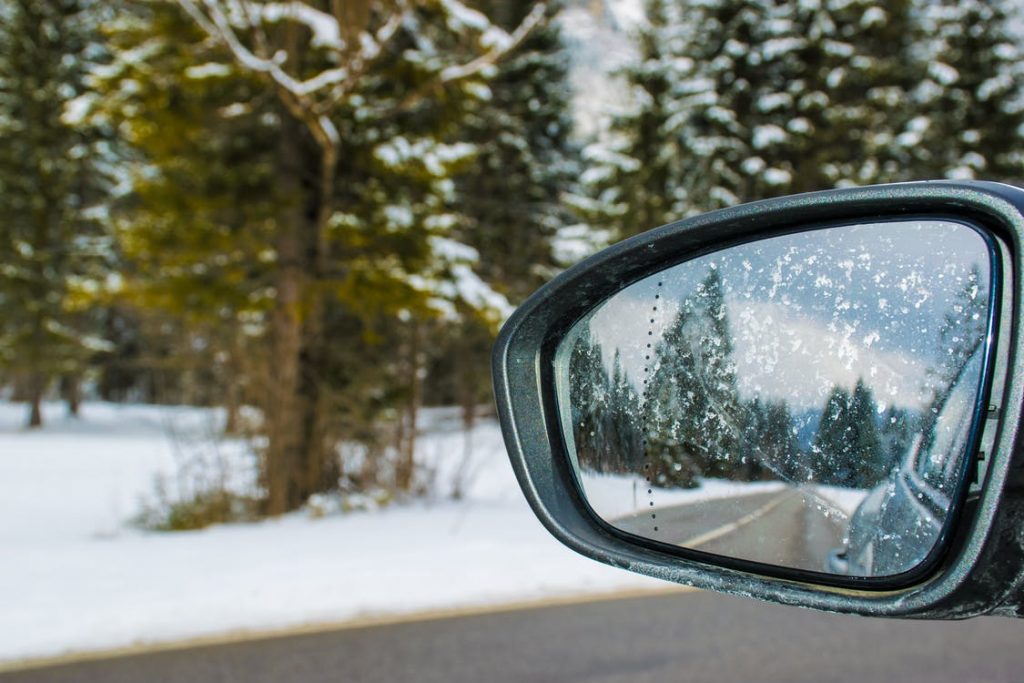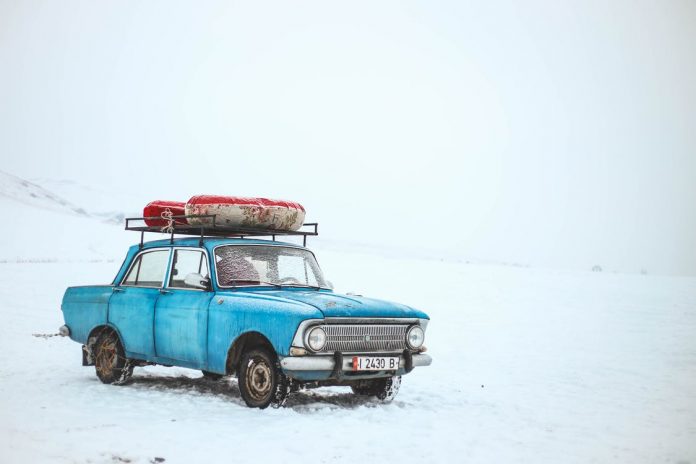However, many automobiles are winter victims because drivers fail to give their automobiles a fighting chance by properly winterizing their car with maintenance. That alone can make big difference when the temperature dips below freezing.
Check the Fluids
Have the radiator system serviced, or check the antifreeze fluid level yourself with an antifreeze tester. It’s best to add antifreeze, as needed. Make sure the oil is changed with the appropriate grade. Check the owner’s manual for appropriate type and timing for oil changes.
Also check the windshield wiper fluid, and the wipers. Bad wipers and/or no fluid can be a hazard and when driving in extremely snowy weather.
In addition, keep the gas tank at least half full or nearly full during the winter season. That can help prevent a gas-line freeze up. Keeping a bottle of dry gas in the garage may also be a good idea to add to the gas tank at times during the winter season. It helps to absorb moisture.
Check Your Belt
If the car’s serpentine belt is damaged, big trouble could be on the way. It is said freezing weather increases the risk for “frayed or worn belts to break during winter.” That belt drives the water pump, alternator and other devices.
Check the Tires

Tires often deflate when cold temperatures strike making driving dangerous. Air pressure decreases in tires “one to two pounds per square inch for every 10-degree drop” in temps according to AAA. Make sure to inflate tires at the appropriate level as specified by the tire manufacturer to insure the car’s tires grip the road. Also remember to check the brakes and the brake fluid.
Stock Your Car
Keeping a winter driving kit in your car can be extremely helpful in the event of an emergency.The kit should include:
- a small bag of salt, sand or non-clumping cat liter
- a small snow shovel
- a snow brush and ice scraper
- a flashlight with new batteries
- extra window washing fluid
- a cloth or roll of paper towels
- flares or triangles
- jumper cables
- drinking water
- extra clothes
- a blanket.
Finally, keep a cell phone and additional charger handy in the car while driving. Because even when all the prior precautions are taken, sometimes when Jack Frost makes a visit, the only action a driver can take is to make a call for help. Winterizing the car by taking a trip to a favorite car garage and taking extra precautions by stocking the car with emergency gear will make every car trip a lot safer.
Safe Winter Driving Tips for the Everyday Driver
When the first flakes begin to fall, the smart driver will change his or her driving immediately, taking into account the likely deteriorating conditions around him or her. Much of it is common sense, which makes it not that difficult to master.
The easiest thing to learn to do is to slow down. Speed alone causes many of the problems with control that a driver will experience in wintry conditions, and keeping a slow rate of speed may assist in keeping the car in a straight line.
Before Venturing Out, Be Prepared
If wintry weather is in the forecast, it may be a good idea to keep certain items in the car in case of potential problems. A winter driving survival kit is a very good idea. Among the items to include are a working flashlight, reflective triangles, a first aid kit, a shovel, food and water, among other items.

Ensuring the automobile is in good working order is also a good idea. Like the human body, cold and winter weather is also tough on the car. Ensuring the car’s tires have tread, the battery is good working order, and the cars hoses and belts are not worn will prevent a potential breakdown.
On the subject of tires, most importantly if the car is to be driven it should be with “all season” or “winter” tires. Some cars, especially in the performance category, come with tires which are not rated for use in cold weather. At temperatures below 40F (5C) and in icy conditions the tire will have reduced (and sometimes no) traction.
Driving Through Snowy and Icy Conditions
As a courtesy to other drivers, keep headlights on low beam, as the high beam will not only blind oncoming drivers, but will reduce your visibility as more light hits the falling snow. Cruise control should also be disabled.
While it may be tempting to change lanes to get around slower vehicles, it is not recommended. Stay in the lane that is more clear of snow and debris. Changing lanes may cause the vehicle to get stuck in the snow buildup in the center between the two lanes. Also, be alert to what is happening ahead, as much as 20 to 30 seconds if possible.
Light use of the brakes is also recommended, as heavy use can cause the car to skid.
What to Do if the Car is Stuck in Snow
Getting stuck is sometimes hard to prevent. However, if it happens, do not simply put the gas pedal to the floor. Chances are that will only cause the vehicle to sink further into the snow, making removal even more difficult.
The best thing to do is to use a material that will help traction, such as kitty litter or sand, and place that under and close to the tires. Keeping the car in a low gear while allowing it to rock back and forth is the best method to dislodge the vehicle from the snowbank.
For the safety of those involved, ensure that nobody is behind the wheels as they may be struck by debris. Also insure the tailpipe is not blocked by snow to prevent carbon monoxide from building up within the vehicle cabin.
What to Do if the Car is Skidding
Finally, probably the most important thing to know is what to do if the car skids. The Nevada DOT and other transit groups recommend that you steer in the direction of the skid, and slowly remove the foot from the accelerator.
Using the brake in a skid may actually make the problem worse, some say.








